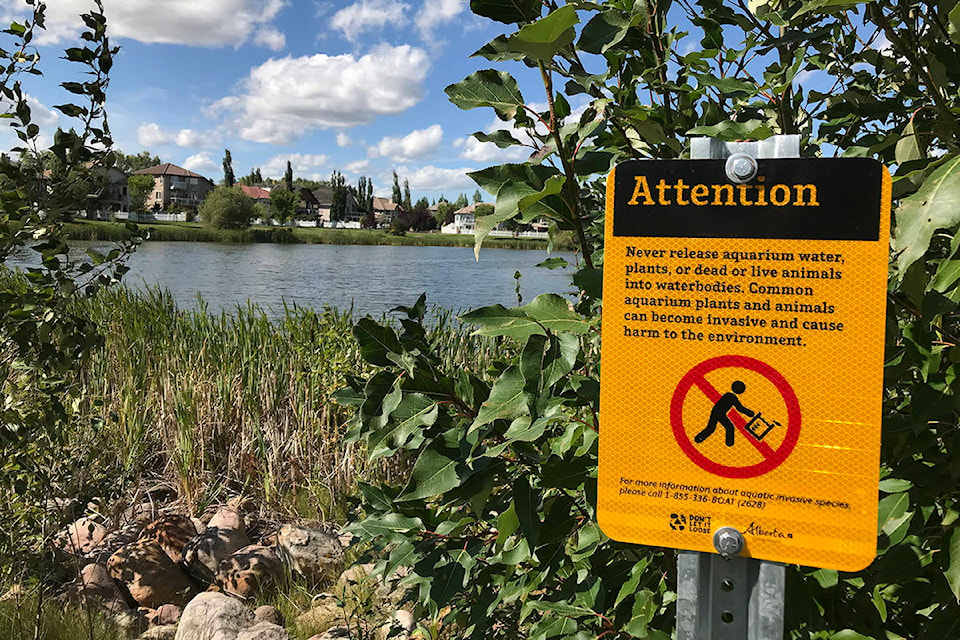Goldfish continue to infest local stormwater ponds, leaving the City of Red Deer considering everything from culling to containing this non-native species.
Geoff Stewardson, wastewater superintendent for the city, said municipal workers will return this spring to Anders pond, where a $250,000 culling program led to the removal of 882 dead goldfish last spring.
An organic chemical was used to kill-off these non-native fish. The problem is “we don’t know if it was 100 per cent effective,” said Stewardson, who noted, “All the costs could be undone if somebody put another goldfish in the pond.”
Fish eggs were also unaffected by the chemical.
Stewardson said city workers lowered the level of the Anders pond last fall in hopes it would freeze to the bottom and kill off any goldfish or carp eggs that had been laid. But he doesn’t yet know if this was successful.
West Park storm pond was supposed to be next on the list for goldfish culling. But Stewardson believes there’s a need to further evaluate the success of the Anders program before proceeding with this costly chemical method.
All city ponds will be examined this spring and summer, to see to what extent they have non-native species, he said.
City workers will also consult with other municipalities to see what luck they are having at removing or containing goldfish so they don’t get into Alberta’s rivers and streams.
Related:
-Hundreds of goldfish removed from Red Deer pond
-More ponds to be investigated
Stewardson said some fish gates can contain goldfish to stormwater ponds, not allowing them to travel to connected river ways. The trouble is, a small-gauge mesh would be needed, and that could easily get blocked by leaves and other debris.
“We need to look at ways to keep the fish in the pond, but keep the water flowing,” he added.
The provincial government has urged communities to deal with the non-native fish problem in their storm ponds to prevent more goldfish or carp from edging out native species through their voracious eating and prolific breeding habits.
City of Red Deer workers know a lot of carp already exist in the Red Deer River. The Asiatic fish regularly turn up in a shallow channel through which treated water is released into the river from the city’s water treatment plant.
When carp numbers build up, the city has asked a biologist to electroshock these fish and remove them from this river channel.
Goldfish (or Prussian carp, a form of wild goldfish) have no natural predators and can grow very large. They out-compete native species for food and habitat and can introduce diseases and parasites, reducing biodiversity.
They also stir up sediment, clouding the water and causing more algae and plant growth.
Stewardson said the city will focus this summer on an educational campaign to make residents aware of the problems created when pet fish are released into a waterway.
“We want to get the message out to residents to not release an invasive species that could cause large disruptions to native species.”
lmichelin@reddeeradvocate.com
Like us on Facebook and follow us on Twitter
